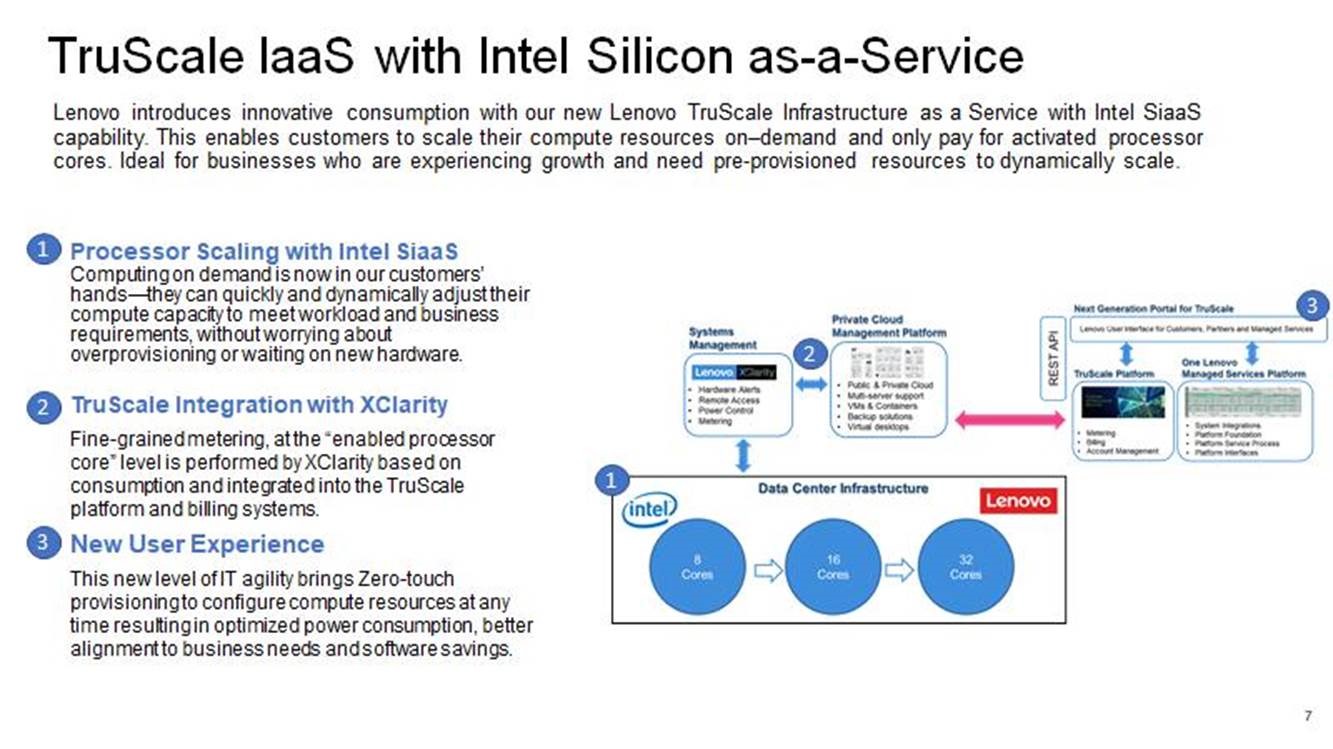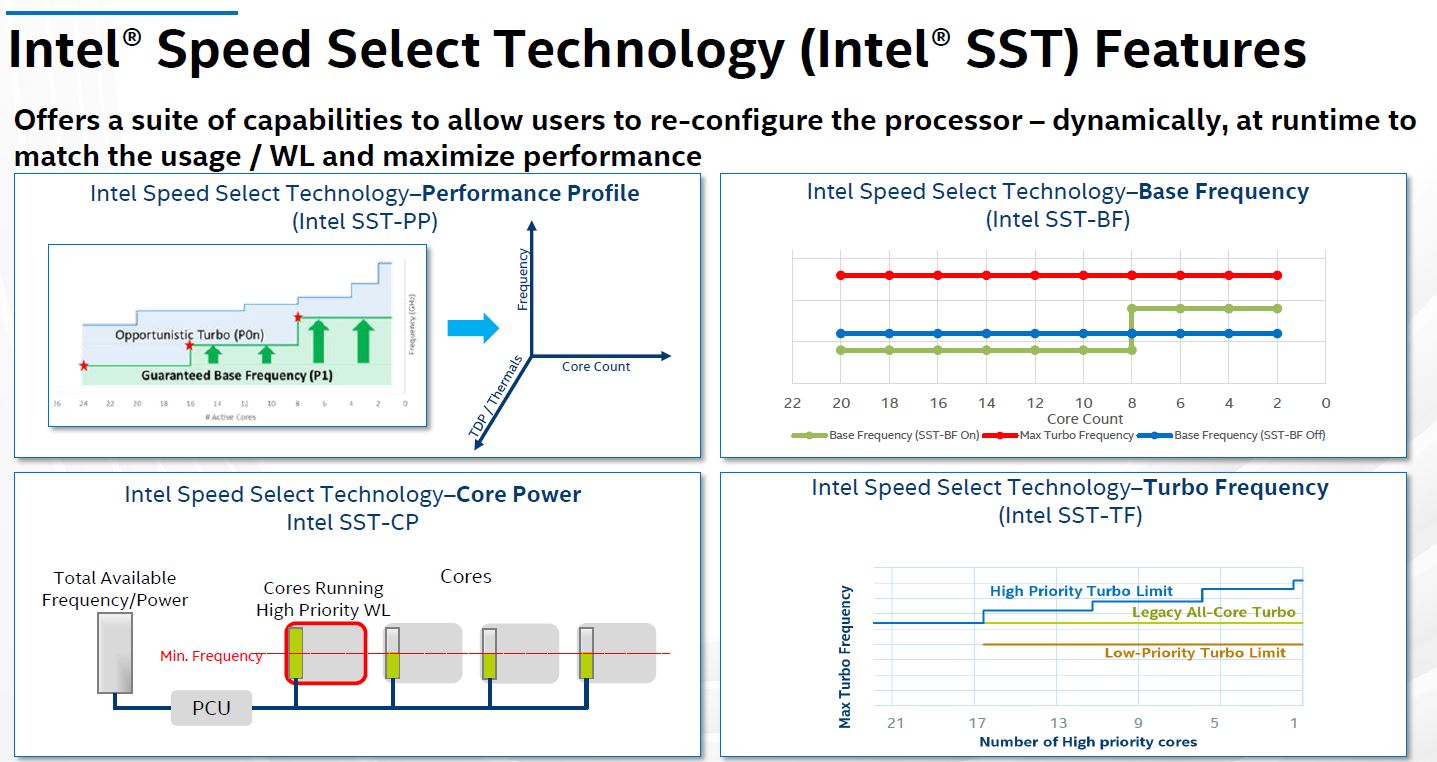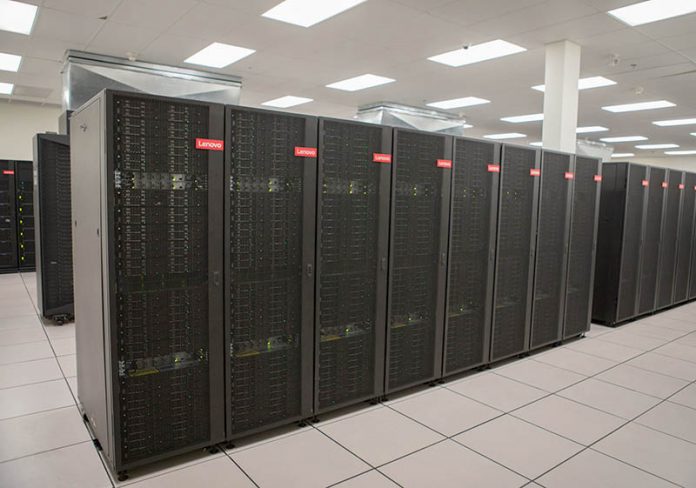At Lenovo Tech World 2021, the company took a page from a bygone era, specifically introducing Silicon-as-a-Service. For those wondering, they are using SiaaS instead of SaaS, but it is close here. Still, Lenovo as part of its expanded TruScale (not TrueNAS Scale) has a very interesting feature: it can increase the number of cores in your machine without having to swap in new processors.
Lenovo TruScale Enables Silicon-as-a-Service by Intel
For those who are unaware, Lenovo TruScale utilizes the power consumed by a server as a proxy for the consumption of that server. Lenovo’s reason is clear: it can meter the power at the power supplies or the PDU without having to install a management service and use resources of the server itself for metering. Intel was convinced that this is an acceptable proxy and agreed to enable CPU cores as a service with Lenovo’s power monitoring serving as a consumption proxy.

STH asked whether Lenovo is utilizing Intel Speed Select Technology or Intel SST here. Intel has a specific SST-PP feature with some of its processors to dynamically tune core counts, frequency, and TDP.

Even after a follow-up Lenovo was unable to confirm how they were accomplishing this task. This may not be what Lenovo TruScale SiaaS is using, but Lenovo has a capability using Intel chips. Those Intel chips have a seemingly matching capability. So we are going to put those slides on a page and let our readers decide.
Final Words
Overall, this is a very interesting model. The advantage is that Lenovo and Intel can deploy a single, higher-volume configuration, and then adjust the core counts and TDP according to needs, increasing them without having to pull a server out of a rack. For Intel, this means they are selling higher core count chips into this ecosystem in the hope that at some point those extra cores get used. We wish we had a confirmation that Lenovo is using SST, but the company’s representatives were unable to confirm even after a follow-up to STH.
Lenovo also discussed that it is bringing new TruScale capabilities and models this week. For example, it will bring VMware Edge Cloud and Microsoft to its offering and integrate them with its management features. It announced a partnership with Deloitte where Deloitte can resell TruScale offerings. STH asked whether there was a partnership with a major data center provider to just offer fully managed offerings like Dell Apex and HPE GreenLake are doing by colocating managed hardware with providers like Equinix. Lenovo told STH that they do not have this offering at this time.





Is there any word on how PDU-level power metering as a pricing metric is going to take things like accelerator cards and storage options into account?
I don’t doubt that they can pick out differences in CPU utilization between like-for-like systems; but it’s definitely not hard to pick non-CPU components that change the system’s power draw considerably more than a couple of CPU SKU bumps in one direction or the other would. Is the offer contingent on CPU power being the only thing that the customer might want to change over the lifetime of the hardware, or do they have some other mechanisms in place?
Seems to me like a solution to the ever growing pains in licensing fees for per core software deployments – being able to fill the DC with same hardware and then quickly and easily switch actual visible/reported core counts brings the vritualisation vCPU paradigm to the hardware/firmware level without the virtualisation costs… Or in other words an option to get stable revenue for using an expensive piece of gear from Lenovo that software vendors are also billing for running their code on – I guess it might make sense if the balancing act of pricing is in favor of the currently more expensive but then in near future, when revenue and compute requirements increase, unlockable HW. Buying a lot of same gear can allow for better deals on corporate/enterprise levels of purchasing, but TCO may then be adjusted on the fly… Guess the Cloud of Hardware may find some adoption rates ;)